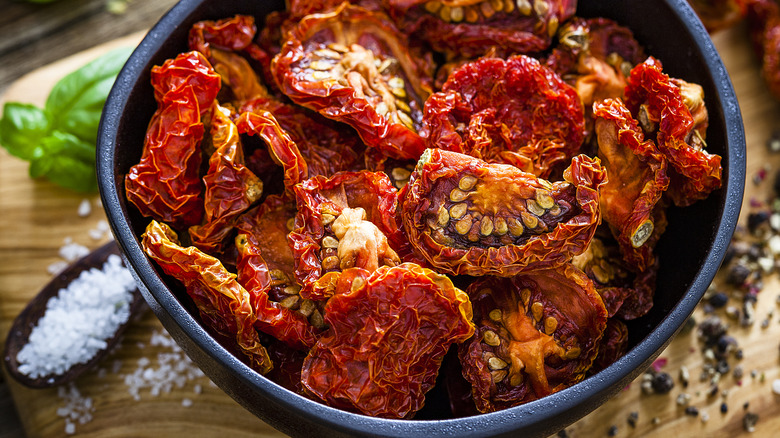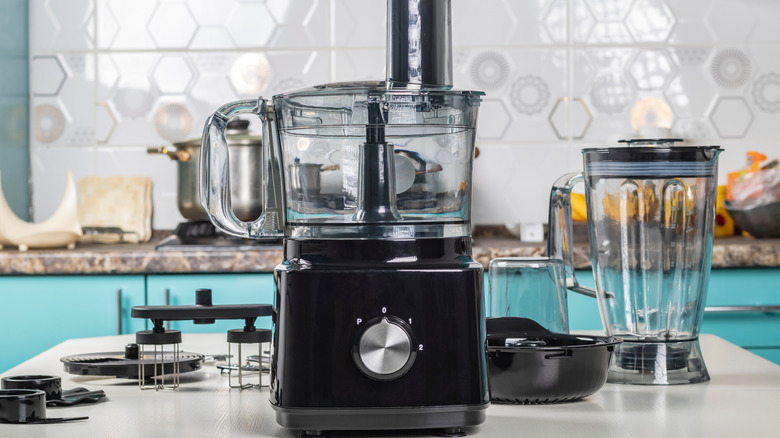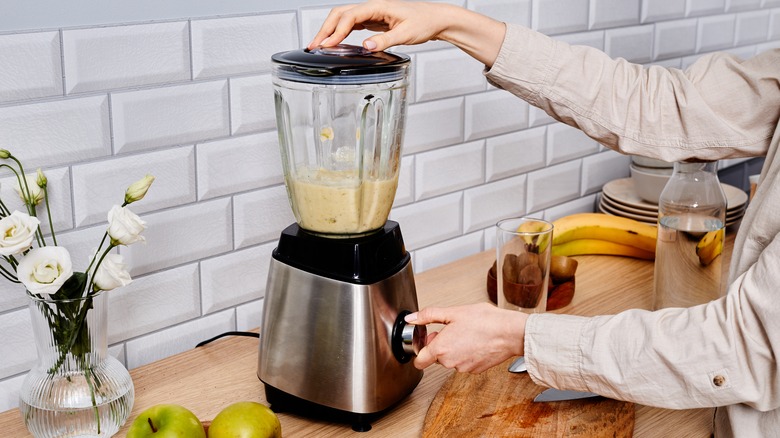It's Never A Good Idea To Put Sun-Dried Tomatoes In Your Blender
Sun-dried tomatoes are a culinary delight. Their tantalizing blend of sweet and tart flavors adds a memorable punch to many dishes, especially when they're made into sun-dried tomato oil. These robustly flavored morsels are an absolute treat in rustic pasta, lively salads, gourmet pizzas, and even artisan sandwiches. Yet in the realm of kitchen wisdom, there's a noteworthy caution — avoid putting sun-dried tomatoes in your blender. As unassuming as these concentrated flavor packets may appear, they can turn into quite a handful for this kitchen appliance.
Due to their dehydrated nature, sun-dried tomatoes have a chewy, sticky texture. When tossed into a blender, they tend to cling stubbornly to the blades. This makes cleaning an unexpectedly tricky task, with the stubborn tomato bits refusing to budge easily.
But that's not all — their tough texture also poses a threat to your blender's longevity. Over time, the strain from attempting to blend these challenging bits might result in mechanical problems.
The trouble with sun-dried tomatoes in the blender
With their intense flavor profile, sun-dried tomatoes can elevate any dish. However, their dehydrated, tough texture can be daunting, especially when the regular blender seems ill-equipped to handle them. But don't despair; there are clever ways to tackle this culinary challenge without putting strain on your kitchen appliances.
Hydration is the first secret weapon. By immersing sun-dried tomatoes in warm water, vegetable broth, or a bold and aromatic wine, their texture softens significantly, transforming them from their rigid, tough state into pliable, easily cut pieces. You can use a sharp knife or kitchen shears to snip them into small, recipe-ready bits that seamlessly blend into your culinary creations, unleashing their robust flavors without any blender mishaps.
But suppose you're aiming for a smoother texture or need to process the tomatoes further? That's when a food processor, such as a Vitamix, becomes your best ally. Unlike blenders, food processors are specifically designed to tackle tougher ingredients. Their robust build and unique operation mechanism are more than capable of handling strong-willed sun-dried tomatoes. They can provide a consistently fine chop, lending an intricate texture to your dishes, all without placing any undue stress on the appliance.
Other foods you shouldn't put in your blender
The tricky nature of sun-dried tomatoes reminds us of a simple fact: not all foods are a good fit for your blender. Even the toughest blenders can find some everyday kitchen items a bit challenging. Take coffee beans, for instance. These hard nuggets can prove too resistant for a regular blender, posing a risk to its blades. Similarly, very hot liquids can create pressure buildup, potentially causing harm to both the blender and the user.
Hard, uncooked grains, such as rice or barley, can also be a problem. The blender may struggle to break them down evenly, which can lead to uneven texture in your dish and potential mechanical strain on the appliance. Ice, a common ingredient in many smoothie recipes, can also be a risky addition. Large chunks of ice can blunt the blades over time and put undue pressure on the motor. To avoid this, it's always best to use crushed ice or small ice cubes.
Being aware of these potential blender pitfalls will ensure that your trusty appliance remains in top form and is ready to whip up your favorite recipes without a hitch.


